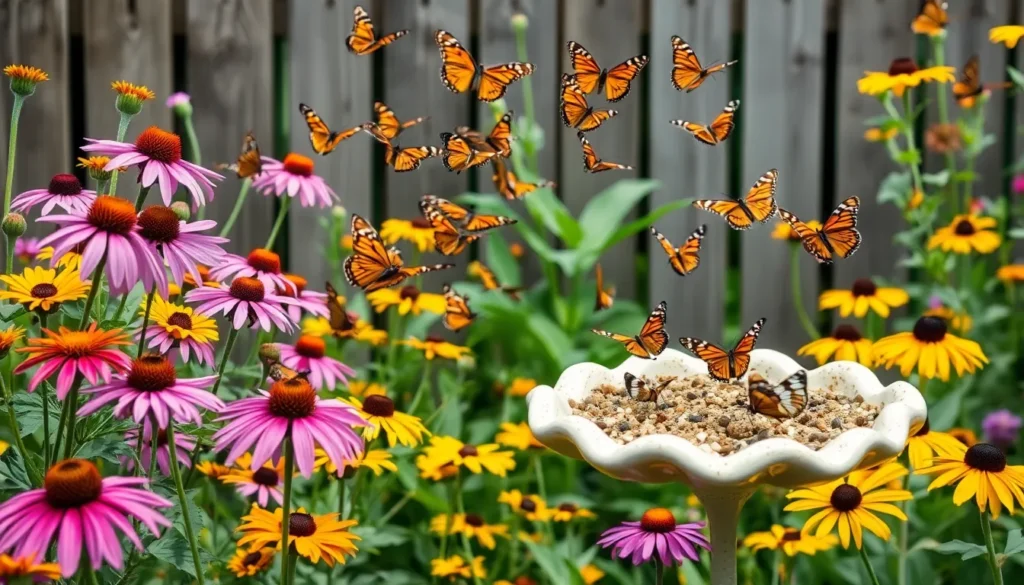Imagine stepping into your garden, greeted by a fluttering of vibrant wings and the gentle hum of life taking flight. Whether you’re a seasoned gardener or just beginning to explore the joys of planting, creating a butterfly garden offers a unique blend of beauty and biodiversity that’s both enriching and exhilarating. Butterflies are not only a delight to the senses but also crucial contributors to our ecosystem, acting as pollinators that help maintain the health of our environment.
In this article, we delve into the art and science of crafting a butterfly haven right in your backyard. You’ll learn how to select the perfect plants to attract various butterfly species, discover the secrets of creating a nurturing habitat, and find tips to keep your garden thriving throughout the seasons. By the end, you’ll be equipped with the knowledge and inspiration to transform any outdoor space into a sanctuary that supports these enchanting creatures and brings a touch of magic to your daily life.
Choosing the Perfect Garden Spot
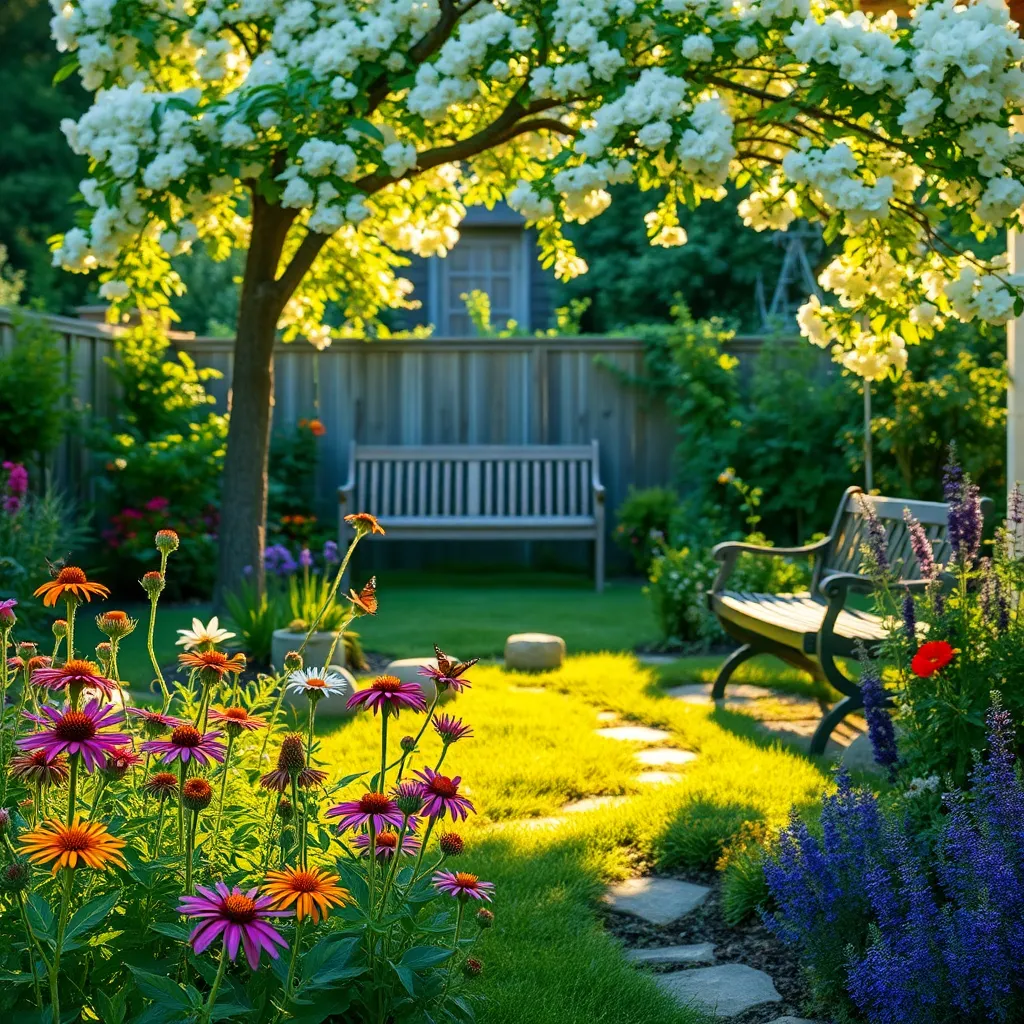
Finding the right spot for your butterfly garden is crucial for its success. Begin by selecting a location that receives at least six hours of sunlight each day, as butterflies are most active in sunny areas.
Next, evaluate the soil quality where you plan to plant. Ensure the soil is well-draining to prevent waterlogging, which can harm both plants and butterflies.
Consider the proximity of your chosen location to water sources. Butterflies are attracted to areas with puddling spots, so having a shallow dish with water nearby can enhance their visits.
Additionally, take into account the protection from strong winds, which can deter butterflies from visiting. Planting your garden near a hedge or fence can provide a windbreak, creating a more inviting environment.
Selecting Butterfly-Friendly Plants
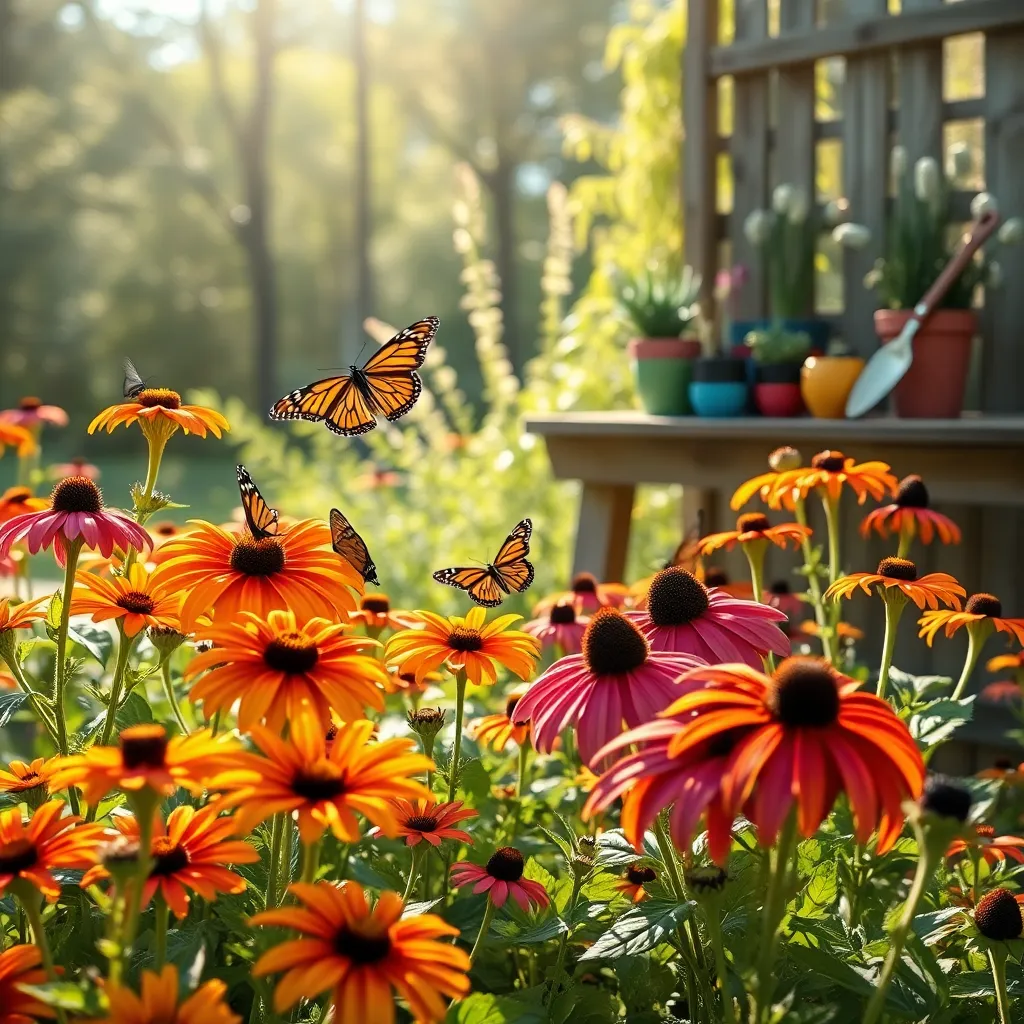
To attract butterflies to your garden, it’s essential to select plants that provide both nectar for adult butterflies and food for caterpillars. Choose a mix of flowering plants that bloom at different times to ensure a continuous source of food throughout the growing season.
Consider planting native species, as they are more likely to attract local butterflies and thrive in your garden’s climate. Native plants are also generally more resilient, requiring less maintenance and fewer resources.
For a basic butterfly garden, include plants like milkweed, coneflowers, and verbena, which are known to attract a variety of butterfly species. Ensure these plants are placed in a sunny spot as butterflies are cold-blooded and prefer sunlit areas to warm themselves.
Advanced gardeners might experiment with a wider range of species such as asters and butterfly bush to attract specific types of butterflies. Regular deadheading and pruning will encourage continuous blooms, providing ongoing nourishment for your fluttering visitors.
Creating a Colorful Plant Palette
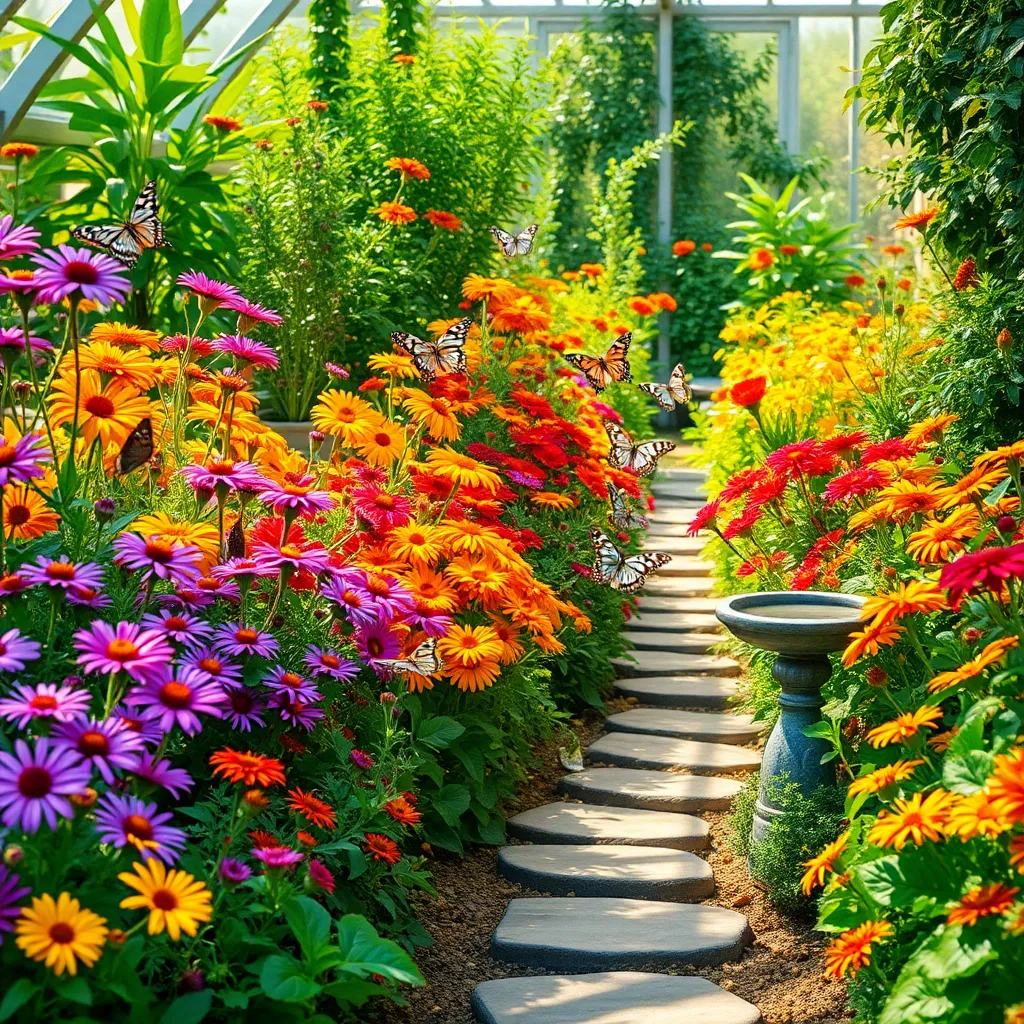
To create a colorful plant palette that attracts butterflies, start by selecting a variety of plants with different bloom times. This ensures your garden offers vibrant colors throughout the season and provides continuous nectar sources for visiting butterflies.
Including both annuals and perennials in your garden design is a smart way to maintain color diversity. Annuals like zinnias and cosmos offer bright, bold colors, while perennials such as coneflowers and black-eyed Susans provide reliable blooms year after year.
Consider the height and texture of your plants to add visual interest and create a layered effect. Taller plants like Joe-Pye weed or sunflowers can act as a backdrop, while shorter plants such as marigolds can fill in the foreground, giving depth to your garden.
When choosing your plant colors, aim for a mix that complements each other and attracts butterflies. Warm colors like reds, oranges, and yellows are particularly appealing to many butterfly species and can be paired with cooler tones like purples and blues for a balanced look.
For the best results, plant in groups or drifts rather than individual specimens. This approach not only makes a stronger visual impact but also provides easier access for butterflies to forage across multiple flowers in one visit.
Incorporating Host Plants for Caterpillars

To truly attract butterflies, it’s essential to incorporate host plants for caterpillars into your garden. These plants provide nourishment for the caterpillar stage of a butterfly’s life cycle, which is crucial for their development.
Consider including milkweed if you want to attract monarch butterflies. Milkweed thrives in well-drained soils and requires full sun, making it a hardy choice for many gardens.
Another excellent option is the fennel plant, which is a host for the swallowtail butterfly. Fennel prefers rich, loamy soil and should be watered deeply but infrequently to encourage strong root growth.
For a splash of color, try planting parsley, which also supports swallowtails. Parsley grows best in moist, well-drained soil with some shade, making it versatile for various garden layouts.
Advanced gardeners might consider creating a diverse habitat by combining multiple host plants. This approach not only supports different butterfly species but also contributes to a balanced garden ecosystem.
- Plant host plants in clusters to make it easier for butterflies to find them.
- Avoid pesticides, as they can harm caterpillars and butterflies alike.
- Regularly check for caterpillars and eggs to understand which plants are most effective.
Adding Nectar Sources for Butterflies
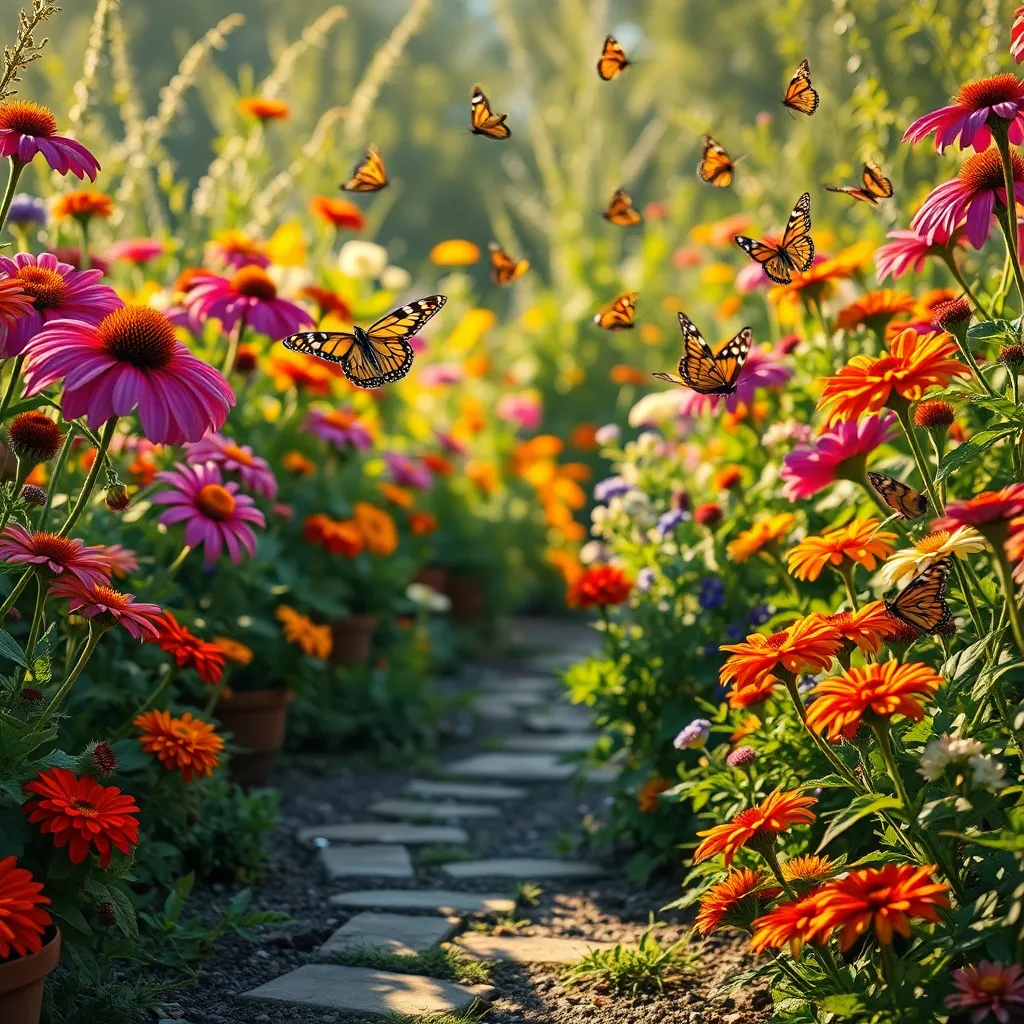
To attract butterflies, it’s essential to provide a variety of nectar sources in your garden. Choose flowers that bloom at different times of the year to ensure a continuous food supply.
Brightly colored blooms are particularly attractive to butterflies, with red, yellow, and purple shades being the most popular. Consider planting zinnias, lantanas, and coneflowers, which are excellent nectar sources and thrive in well-drained soil.
For best results, plant your flowers in sunny locations, as butterflies prefer warmth and sunlight while feeding. Group plants in clusters to make it easier for butterflies to locate them and maximize their visit to your garden.
Additionally, ensure your plants receive adequate water, especially during dry periods, to keep them healthy and productive. Water deeply once a week, allowing the soil to dry out slightly between watering to prevent root rot.
Designing Butterfly-Friendly Water Features
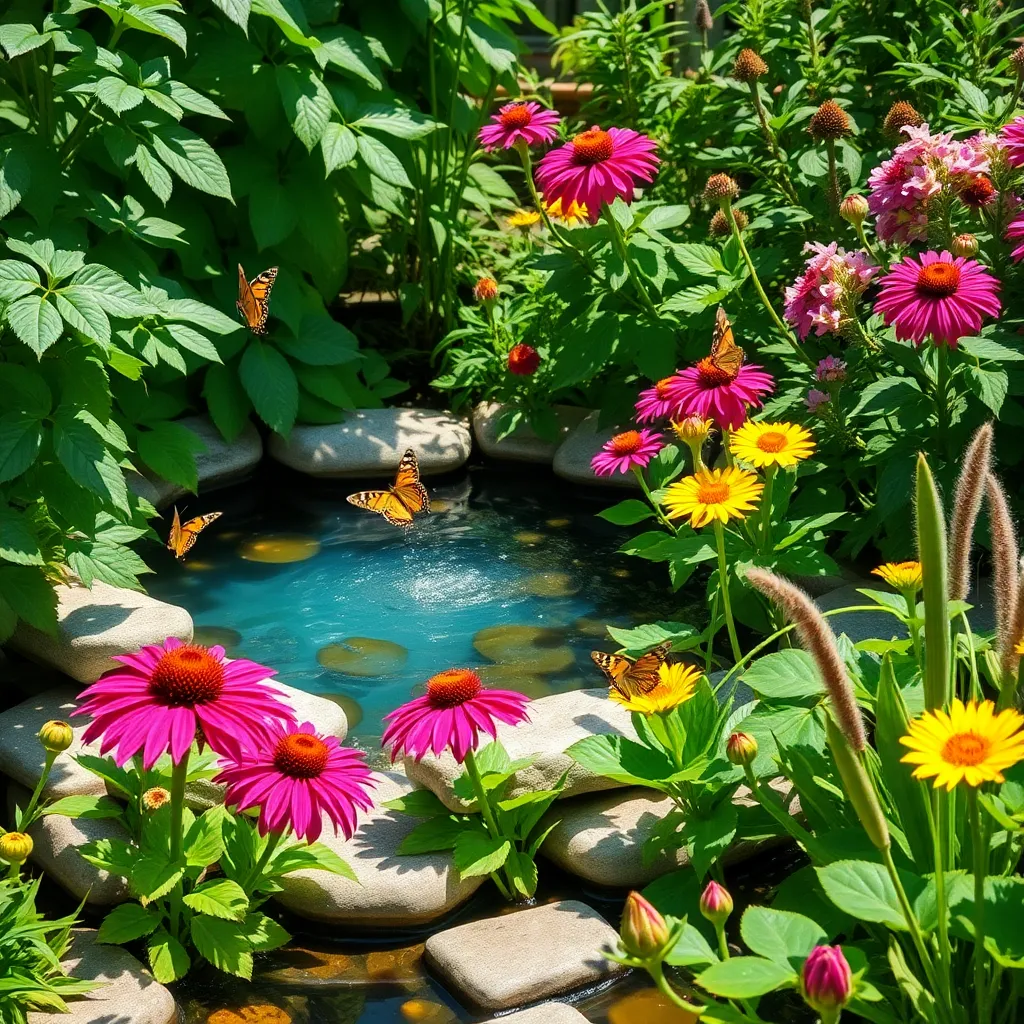
Butterfly-friendly water features can be a delightful addition to your garden, drawing in these beautiful creatures with ease. To start, consider installing a birdbath or shallow dish filled with water, as butterflies prefer shallow water sources.
Place these water features in a sunny, sheltered spot to keep the water warm and inviting. It’s essential to add flat stones or pebbles inside the water feature, providing butterflies with safe landing spots for hydration.
For a more advanced setup, create a small, recirculating waterfall using a pump to keep the water fresh and gently moving. This not only attracts butterflies but helps prevent mosquitoes by eliminating stagnant water.
Regular maintenance is crucial; refill the water feature daily and clean it weekly to prevent algae build-up. Use rainwater whenever possible, as it is free of chlorine and other chemicals that might deter butterflies.
Providing Shelter and Sunbathing Areas
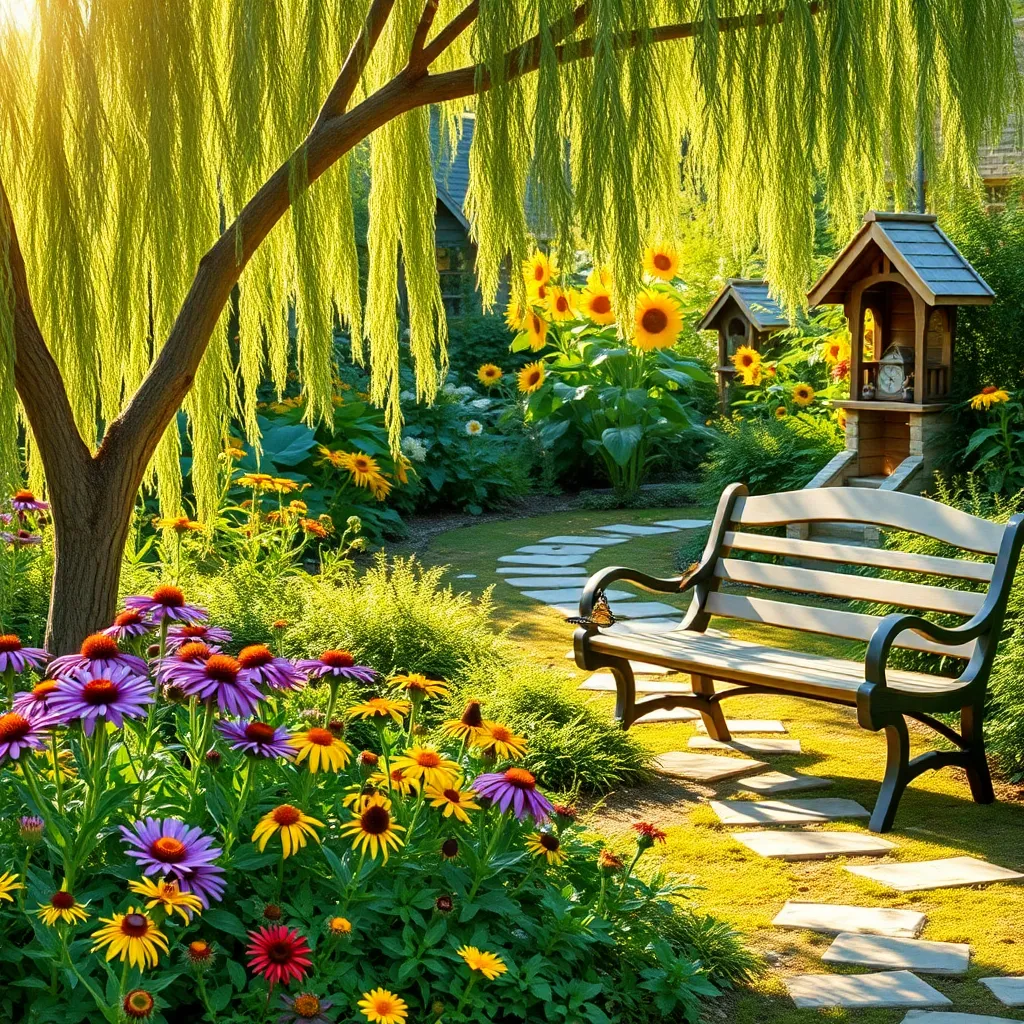
In creating a butterfly garden, providing shelter is essential for protecting these delicate creatures from harsh weather conditions. Incorporate dense shrubs like spicebush or buttonbush, which offer both coverage and food sources for caterpillars.
Additionally, consider planting clumps of native grasses such as little bluestem to give butterflies a place to hide and perch. These grasses are low-maintenance, thriving in various soil types and requiring minimal watering once established.
Designing sunbathing areas is equally important because butterflies are cold-blooded and need the sun to warm up. Position flat rocks or dark stones in sunny spots to create natural basking sites, helping butterflies regulate their body temperature efficiently.
For an advanced tip, use a combination of early-blooming and late-blooming plants around these sunbathing areas to provide prolonged nectar availability. This ensures that your garden remains a welcoming habitat for butterflies throughout the growing season.
Maintaining Your Butterfly Paradise
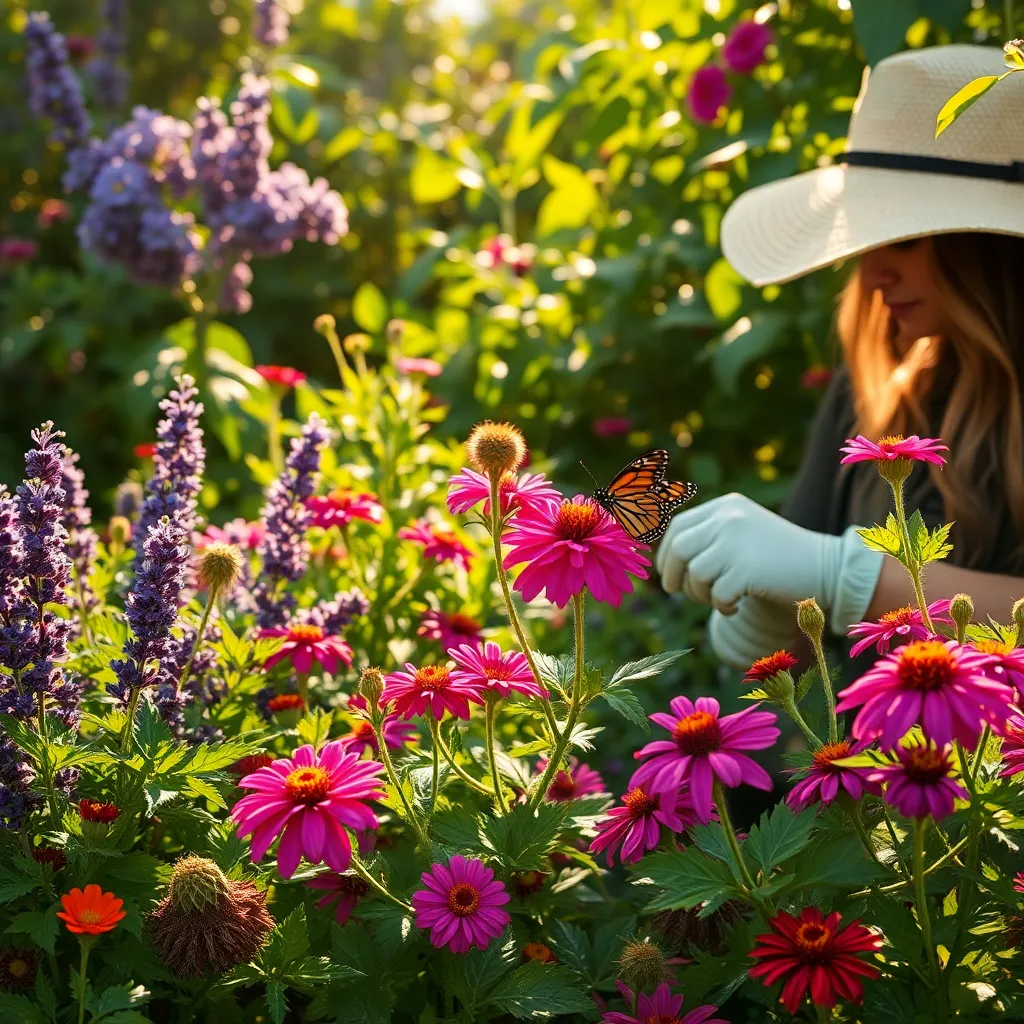
To maintain your butterfly paradise, it’s essential to keep your garden thriving and attractive to these delicate visitors. Regularly inspect your plants for signs of disease or stress and address any issues promptly to ensure a healthy environment.
Consider implementing a consistent watering schedule to keep your plants well-hydrated, especially during dry spells. Most butterfly-friendly plants prefer well-draining soil, so ensure your garden bed facilitates proper drainage to prevent root rot.
It’s crucial to deadhead flowers to promote continuous blooming and an ongoing supply of nectar. This simple task involves removing spent flowers and can significantly enhance the overall appearance and productivity of your garden.
Advanced gardeners might explore companion planting to naturally deter pests and improve plant growth. For instance, planting marigolds alongside milkweed can help manage aphid populations without the use of chemicals, creating a safer space for butterflies.
Conclusion: Growing Success with These Plants
In “8 Fun Creating A Butterfly Garden,” we explored the delightful parallels between tending to relationships and nurturing a butterfly garden. We emphasized the importance of understanding each other’s needs, creating a supportive environment, and embracing growth and change. Just as a garden flourishes with diverse plants, relationships thrive on varied experiences. We discussed the value of patience, the joy of shared activities, and the beauty of transformation. Lastly, we highlighted the power of communication and the need for consistent, loving care.
Now, take a moment to reflect on one concept that resonates with you. Consider how you can apply it to your relationship today, whether it’s planning a shared activity or simply expressing gratitude. This small action can be the first step toward cultivating a more vibrant connection.
I invite you to save this article as a handy guide for nurturing your relationships. By revisiting these concepts, you can continually enrich your connections. As you embark on this journey, remember that the seeds of effort you plant today can blossom into lasting relationship success. Let’s nurture our gardens of love and friendship, ensuring they flourish for years to come.

